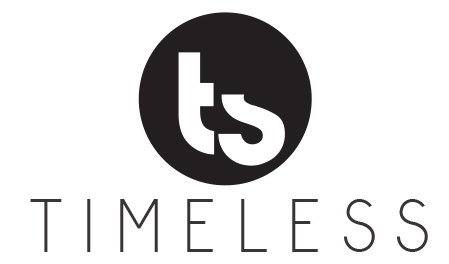
by timelessnc | Nov 9, 2018 | Retirement Income Planning, Social Security
Social Security recently announced that the cost-of-living adjustment (COLA) in 2019 will be the highest since 2012. Next year’s benefit increase of 2.8 percent is significantly higher than 2018’s 2 percent raise. In fact, other than 2012, there hasn’t been an increase of more than 2 percent in the past 10 years. There weren’t any COLA increases in 2010, 2011 or 2016.1
The 2019 COLA may be welcome news for seniors who are struggling to keep up with rising costs for groceries, energy and much more. Social Security offers COLA increases to benefits to help recipients keep up with inflation. The COLA amount is based on a broad version of the consumer price index (CPI).
Why the COLA May Not Be Sufficient for Seniors
An increase in Social Security benefits is always good news. However, there are a few reasons why even a 2.8 percent increase may not be enough to help seniors keep up with rising prices.
First, for many retirees, Social Security makes up only a portion of their overall income. Since the COLA increase only applies to Social Security benefits, it doesn’t mean retirees are getting an overall increase in income. If you receive income from a pension or investment distributions, you may need to take other steps to keep up with inflation.
There’s also debate about how Social Security examines costs such as housing and health care to calculate COLA. Social Security uses the CPI-W, or consumer price index for urban workers, to estimate COLA.
The problem is that the CPI-W tracks costs for workers, not for seniors. Many retirees face different costs than the average worker faces. For instance, retirees may have increased health care and housing costs. The CPI-W doesn’t weight those areas heavily, so it may not be an accurate gauge for retirees.
Tips to Keep Up With Inflation
The good news is there are other steps you can take to manage your exposure to inflation and protect yourself against rising costs. One is to maintain a balanced approach and not become too conservative in your strategy. You’ll likely need some level of growth. That often means taking risk.
However, you may want to talk to a financial professional about tools that can generate increasing income and minimize risk exposure. For example, you can use an annuity to generate a guaranteed* income stream and potentially increase over time. Often, the annuity is guaranteed* for life, regardless of market performance.
You also may want to look at long-term care insurance with an inflation protection rider. Long-term care can be a sizable expense, and it usually isn’t covered by Medicare. Also, costs are rising every year, often at a higher rate than inflation. An insurance policy in which the benefits are aligned with inflation could help you keep up with rising costs.
Ready to develop your retirement inflation strategy? Let’s talk about it. Contact us at Timeless Solutions today. We can help you analyze your needs and implement a plan. Let’s connect soon and start the conversation.
1https://www.ssa.gov/cola/
*Guarantees, including optional benefits, are backed by the claims-paying ability of the issuer, and may contain limitations, including surrender charges, which may affect policy values.
Licensed Insurance Professional. This information is designed to provide a general overview with regard to the subject matter covered and is not state specific. The authors, publisher and host are not providing legal, accounting or specific advice for your situation. By providing your information, you give consent to be contacted about the possible sale of an insurance or annuity product. This information has been provided by a Licensed Insurance Professional and does not necessarily represent the views of the presenting insurance professional. The statements and opinions expressed are those of the author and are subject to change at any time. All information is believed to be from reliable sources; however, presenting insurance professional makes no representation as to its completeness or accuracy. This material has been prepared for informational and educational purposes only. It is not intended to provide, and should not be relied upon for, accounting, legal, tax or investment advice. This information has been provided by a Licensed Insurance Professional and is not sponsored or endorsed by the Social Security Administration or any government agency.
The material is not intended to be legal or tax advice. The insurance agent can provide information, but not advice related to social security benefits. Clients should seek guidance from the Social Security Administration regarding their particular situation. The insurance agent may be able to identify potential retirement income gaps and may introduce insurance products, such as an annuity, as a potential solution. Social Security benefit payout rates can and will change at the sole discretion of the Social Security Administration. For more information, please consult a local Social Security Administration office, or visit www.ssa.gov
18149 – 2018/10/17

by timelessnc | Oct 24, 2018 | Estate Planning, life insurance, Managing Healthcare Expenses, Retirement Income Planning
Planning for retirement can seem like a complex process, but it tends to bring unique issues for singles. Married couples often benefit from joint pension payments and dual Social Security income streams, as well as multiple 401(k) accounts and IRAs. Single retirees may find it more challenging to plan for retirement without the benefit of a partner’s income and assets.
Increasing amounts of Americans are single as they enter retirement. That’s especially true for women. According to data from the U.S. Census Bureau, more than half of all women age 65 and older in 2014 were single.1
If you expect to be single in retirement, you may face unique planning challenges and issues. One of the biggest could be the need for long-term care, which is extended assistance with daily living activities such as eating, dressing and bathing. Long-term care is often provided either in a facility or in the home and can cost thousands of dollars per month. According to the U.S. Department of Health and Human Services, 70 percent of retirees will need some form of long-term care.2
Unless you have a strategy in place, long-term care could drain your retirement assets. Below are a few questions you can ask yourself to start planning for long-term care expenses. If you haven’t started planning, now may be the time to do so. It’s never too early to consider the risk and your options.
Who will provide help?
Long-term care is often caused by cognitive issues like Alzheimer’s, Parkinson’s or the aftereffects of a stroke. In the beginning stages of these conditions, a spouse may be able to provide much of the necessary support and assistance. That can delay the need for an in-home aide or a move to a facility.
However, single retirees don’t have the benefit of a spouse to help with day-to-day living activities. Consider who could provide assistance if you should develop a cognitive issue. Do you have grown children in the area? What about other relatives, like a sibling or nieces or nephews? Could you rely on friends or neighbors?
Be careful about depending on friends and family for too much help. While they may be willing to pitch in occasionally, you don’t want to be dependent on someone who has other important obligations. Consider that you may need to pay for a full-time health aide if you wish to stay in your home.
Who can make decisions on your behalf?
Incapacitation is another big concern in retirement. Incapacitation is the inability to make or communicate decisions about your finances or health care. Again, this is often caused by cognitive issues.
Without any input from you, your relatives or doctors may be forced to make decisions on your behalf. They may make choices that you wouldn’t make for yourself. You can avoid this risk by establishing written planning documents such as a power of attorney or a living will. These legal documents provide exact instructions on how your health and finances should be managed and who should make decisions on your behalf.
What are your funding options?
A recent Genworth study found that the average room in an assisted living facility cost $3,750 per month. An in-home health aide was more expensive, costing on average more than $4,000 per month.3 How long could you afford to pay those costs out of your retirement assets? Consider that many people need long-term care for several years.
You may want to look at long-term care insurance. You pay premiums today in exchange for long-term care coverage in the future. Coverage varies by policy, but most insurers cover care that’s provided either in a facility or in a home, and will pay some or all of your costs. A financial professional can help you find the right policy for your needs and budget.
Ready to plan your long-term care strategy? Let’s talk about it. Contact us today at Timeless Solutions. We can help you analyze your needs and implement a plan. Let’s connect soon and start the conversation.
1https://money.usnews.com/money/personal-finance/articles/2016-09-23/many-women-will-be-single-in-retirement-are-you-ready
2https://longtermcare.acl.gov/the-basics/how-much-care-will-you-need.html
3https://www.genworth.com/aging-and-you/finances/cost-of-care.html
Licensed Insurance Professional. This information is designed to provide a general overview with regard to the subject matter covered and is not state specific. The authors, publisher and host are not providing legal, accounting or specific advice for your situation. By providing your information, you give consent to be contacted about the possible sale of an insurance or annuity product. This information has been provided by a Licensed Insurance Professional and does not necessarily represent the views of the presenting insurance professional. The statements and opinions expressed are those of the author and are subject to change at any time. All information is believed to be from reliable sources; however, presenting insurance professional makes no representation as to its completeness or accuracy. This material has been prepared for informational and educational purposes only. It is not intended to provide, and should not be relied upon for, accounting, legal, tax or investment advice. This information has been provided by a Licensed Insurance Professional and is not sponsored or endorsed by the Social Security Administration or any government agency.
18087 – 2018/10/1

by timelessnc | Oct 10, 2018 | Estate Planning, Retirement Income Planning
Estate planning is an important part of any financial strategy. It’s a broad term that covers a lot of issues, but estate planning generally refers to the distribution of one’s assets after death. An estate plan may include a will, trust and other documents that state how your property and other assets should be distributed to your heirs.
In today’s digital age, though, estate planning isn’t just for financial assets. You may have virtual accounts and assets that also need planning and protection. For instance, your email may hold important or sensitive information. Your social media accounts may hold photos, videos or other assets with sentimental value. Perhaps you even have online investment accounts or income streams that will need management after your death.
Unfortunately, there’s no standard legal process for managing these assets. While a will, trust and other tools are accepted as legal documents to manage financial assets, it’s unclear how these documents can be used with regard to digital accounts. This is a relatively new area of estate planning, so your strategy could evolve over time. However, there are a few basic steps you can take today to protect yourself and your digital footprint.
Decide on your wishes for your digital assets.
Before you take any action, it’s helpful to sit down and think about your wishes and objectives. Make a list of your important accounts, such as email, social media, photo and file storage, and more. Then consider what you would like to happen to those accounts after you pass away.
Are there any compelling reasons why someone would need access to an account? For instance, do you do business through an email or online payment account? Would your family need access to that information?
Also consider the sentimental value of your various accounts. Do you have pictures or other memories that you would like to share with your family after you’re gone?
Finally, privacy is also a concern. If you give your family access to your email or social media after you pass away, consider that they may be able to see everything you have ever done in those accounts. There may be certain information or communications that you don’t want to share with your children or other loved ones.
Learn about your digital vendors’ rules.
Since there are no standard rules about posthumous digital management, each company has created its own rules and guidelines. Some email providers are strict and don’t allow any access after an account owner’s death. Others allow access if the account hasn’t been used in several months. Some social media companies will keep your page up as a “remembrance page” with limited access to others.
Do some research to see how your primary account platforms operate after a user’s death. They may allow you to designate a backup person to take over your account or access certain information. If they don’t allow that option, you may need to consider alternative strategies.
Create written instructions.
Theoretically, you could include account management instructions, usernames and passwords in your will or other documents. That may not be a great idea, however, as those documents are often filed as public record. That means anyone could gain access to your accounts.
Instead, consider using a password management tool to store login info, and then simply have your estate executor provide that info to the appropriate person. You could also store a document with digital asset instructions along with your other important documents, such as your insurance policy, will and others.
Ready to review your estate planning strategy? Let’s talk about it. Contact us today at Timeless Solutions. We can help you analyze your objectives and all your assets, and then develop a plan. Let’s connect soon and start the conversation.
Licensed Insurance Professional. This information is designed to provide a general overview with regard to the subject matter covered and is not state specific. The authors, publisher and host are not providing legal, accounting or specific advice for your situation. By providing your information, you give consent to be contacted about the possible sale of an insurance or annuity product. This information has been provided by a Licensed Insurance Professional and does not necessarily represent the views of the presenting insurance professional. The statements and opinions expressed are those of the author and are subject to change at any time. All information is believed to be from reliable sources; however, presenting insurance professional makes no representation as to its completeness or accuracy. This material has been prepared for informational and educational purposes only. It is not intended to provide, and should not be relied upon for, accounting, legal, tax or investment advice. This information has been provided by a Licensed Insurance Professional and is not sponsored or endorsed by the Social Security Administration or any government agency.
18086 – 2018/10/1

by timelessnc | Jul 11, 2018 | Retirement Income Planning
We’re halfway through 2018. Are you on track to hit your savings goals? If not, don’t worry. You have company. It’s easy to get off track with your savings, especially when it comes to a long-term goal like retirement. After all, you may have other expenses—such as debt, emergency costs or child care—that seem more urgent.
The good news is that you still have time left in the year to put away money for retirement. Qualified accounts may be the best way to do so. These accounts, like 401(k) plans and individual retirement accounts (IRAs), offer tax-deferred growth. That means you don’t pay taxes on growth inside the accounts until you take a distribution.
Below are three commonly used qualified accounts and how they can help you save for retirement. You still have time left this year to ramp up your savings. Work with a financial professional to implement a savings strategy.
Employer 401(k) Plan
Does your employer offer a 401(k) plan? If so, it may be your most powerful available savings tool. As mentioned, 401(k) plans grow on a tax-deferred basis. You don’t pay taxes on growth until you take distributions from the plan.
Your 401(k) contributions could also reduce your current taxes. Contributions are usually deducted from your pay on a pretax basis. They reduce your taxable income, thus reducing your tax exposure.
Another powerful aspect of the 401(k) is the potential of earning employer matching contributions. Many employers will match employee contributions dollar-for-dollar up to a certain threshold. For instance, your employer may match as much as 3 percent of your annual salary in contributions. By contributing up to the employer match level, you can substantially increase your savings.
In 2018 you can contribute as much as $18,500 to your 401(k) plan. If you’re age 50 or older, you can also contribute an extra $6,000 in catch-up contributions, bringing your total allowable contribution to $24,500.1
Traditional IRA
You can also contribute money to an IRA. These are individual accounts that offer tax-deferred growth and potentially other tax benefits. You open an IRA through a financial professional, who can help you implement the right strategy for your goals.
The traditional IRA is the most widely held. It’s taxed similarly as a 401(k). Your funds grow on a tax-deferred basis while they’re in the plan. You then pay income taxes on all distributions. You may face a 10 percent penalty if you take a distribution before age 59½. You also may be able to deduct your contributions from your current taxes, assuming you meet income limitations.
In 2018 you can contribute $5,500 to an IRA. If you’re age 50 or older, you can contribute an additional $1,000 in catch-up contributions, giving you a total allowable contribution of $6,500.2
Roth IRA
While the traditional IRA is a helpful tool, you may feel that the Roth IRA is better suited to your needs. The Roth is taxed slightly differently than a 401(k) or traditional IRA. Growth inside the account is still tax-deferred, but there are other components that are different.
First, contributions to a Roth are not tax-deductible. That means you fund the account with after-tax dollars. Your distributions from the Roth are tax-free, however, assuming you take them after age 59½. The Roth can be a powerful tool to create tax-free income in retirement.
Ready to implement your retirement savings strategy? Let’s talk about it. Contact us today at Timeless Solutions. We can help you analyze your needs and develop a plan. Let’s connect soon and start the conversation.
1https://www.shrm.org/resourcesandtools/hr-topics/benefits/pages/2018-irs-401k-contribution-limits.aspx
2https://www.fool.com/retirement/2017/10/22/heres-the-2018-ira-contribution-limit.aspx
Licensed Insurance Professional. This information is designed to provide a general overview with regard to the subject matter covered and is not state specific. The authors, publisher and host are not providing legal, accounting or specific advice for your situation. By providing your information, you give consent to be contacted about the possible sale of an insurance or annuity product. This information has been provided by a Licensed Insurance Professional and does not necessarily represent the views of the presenting insurance professional. The statements and opinions expressed are those of the author and are subject to change at any time. All information is believed to be from reliable sources; however, presenting insurance professional makes no representation as to its completeness or accuracy. This material has been prepared for informational and educational purposes only. It is not intended to provide, and should not be relied upon for, accounting, legal, tax or investment advice. This information has been provided by a Licensed Insurance Professional and is not sponsored or endorsed by the Social Security Administration or any government agency.
17743 – 2018/6/19

by timelessnc | Jun 21, 2018 | Retirement Income Planning
According to a recent Gallup study, many Americans don’t feel confident about their ability to fund a comfortable and enjoyable retirement. The annual survey about Americans’ financial concerns found that 54 percent of respondents are worried about retirement. That’s enough to make retirement the top financial concern for the 17th year in a row.1
Those concerns may be justified. Many Americans are behind on their retirement savings or haven’t sufficiently planned for potential risks. Even if you’ve accumulated enough assets for retirement, you could still face serious financial challenges after you leave the working world.
Below are three surprising things that could derail your retirement if you don’t plan properly. A comprehensive retirement plan can help you analyze these risks and more, and then implement a protection strategy. A financial professional can help you take action against these risks to protect your golden years.
Life Expectancy
There’s no doubt that people are living longer. According to the Centers for Disease Control and Prevention, a 65-year-old male in 1950 could expect to live another 12.8 years. By 2014 that number had increased to 18 years.2
At first glance, a long life expectancy may seem like a good thing. By living longer, you get to enjoy a longer retirement and spend more time with your family. However, a long life span can put a strain on your finances. The longer you live, the more years you may need to fund out of your personal savings.
There are a few ways you can minimize longevity risk. One is to make sure you’ve accumulated enough assets to fund a retirement that can last multiple decades. Another is to manage your spending so your assets last. You also may want to consider tools such as an annuity, which can generate guaranteed lifetime income.
Health Care
Think Medicare will cover all your medical expenses? Think again. Medicare is a valuable resource for retirees, but it doesn’t pay for everything. There are many treatments that Medicare covers only partially or doesn’t cover at all.
That means you could face a significant amount of out-of-pocket health care costs in retirement. In fact, Fidelity estimates that the average 65-year-old couple will face $280,000 in out-of-pocket medical expenses. That figure doesn’t even include long-term care, which can be very costly.3
You can minimize exposure to health care costs by funding a health savings account (HSA). These accounts allow you to take tax-free distributions to pay for medical expenses. You also may want to consider a long-term care insurance policy to cover long-term care costs.
Boredom
Looking forward to a free and open schedule in retirement? You’re not alone. Free time is one of the most appealing aspects of retirement. However, many retirees soon find that they have too much free time on their hands. They may feel that they don’t have purpose or simply become bored.
The risk is that you fill your free time with costly activities such as travel, shopping or new hobbies. It’s important to enjoy retirement, but you don’t want to blow a hole in your budget in the early years of retirement. You can manage this risk by developing a budget and sticking to it. A financial professional can help you create your retirement budget.
Ready to minimize risk in your retirement? Let’s talk about it. Contact us today at Timeless Solutions. We can help you analyze your needs and develop a strategy. Let’s connect soon and start the conversation.
1http://news.gallup.com/poll/210890/americans-financial-anxieties-ease-2017.aspx
2https://www.usatoday.com/story/money/columnist/powell/2016/10/05/life-expectancy-actuaries-live-die-retire-retirement/89407296/
3https://www.fidelity.com/viewpoints/personal-finance/plan-for-rising-health-care-costs
Licensed Insurance Professional. This information is designed to provide a general overview with regard to the subject matter covered and is not state specific. The authors, publisher and host are not providing legal, accounting or specific advice for your situation. By providing your information, you give consent to be contacted about the possible sale of an insurance or annuity product. This information has been provided by a Licensed Insurance Professional and does not necessarily represent the views of the presenting insurance professional. The statements and opinions expressed are those of the author and are subject to change at any time. All information is believed to be from reliable sources; however, presenting insurance professional makes no representation as to its completeness or accuracy. This material has been prepared for informational and educational purposes only. It is not intended to provide, and should not be relied upon for, accounting, legal, tax or investment advice. This information has been provided by a Licensed Insurance Professional and is not sponsored or endorsed by the Social Security Administration or any government agency.
17695 – 2018/5/30

by timelessnc | Jun 11, 2018 | Retirement Income Planning
Do you know whether you’re on track to meet your retirement goals? If the answer is no, you’re not alone. A recent Gallup study found that more than 50 percent of Americans are worried that they won’t be able to fund their retirement.1
If you’re unsure about your preparedness for retirement, it’s never too late to develop a plan and take back control of your strategy. Below are a few red flags that could indicate you’re not as ready as you should be. If any of these sound familiar and you’re approaching retirement, now may be the time to take action.
You don’t know what your income will be in retirement.
Income is at the heart of retirement planning. To sustain your lifestyle in retirement, you’ll have to generate income that exceeds your living expenses. You’ll likely receive income from Social Security, a pension, personal investments and possibly other sources.
Do you know how much income you can count on each year in retirement? While you may not be able to accurately predict your exact income each year, you can probably develop a reasonable estimate. You can then use that estimate to develop a budget and identify any gaps in your savings.
You haven’t planned for health care costs.
Health care is a major expense item for many retirees. Medicare covers many health care costs, but it doesn’t cover everything. In fact, Fidelity estimates that the average retired couple will spend $280,000 on out-of-pocket medical expenses.2
Fortunately, there are steps you can take to minimize your health care expense risk. You can fund a health savings account (HSA), or you can look at supplemental Medicare policies. You may even consider long-term care insurance. If you don’t develop a plan, though, health care expenses could take you by surprise.
You’re financially supporting others.
Still providing financial support to your grown children? You have company. According to a recent study from Fidelity, 47 percent of millennials receive some form of financial assistance from their parents. More than 20 percent still live with their parents.3
It’s natural that you want to help your children. However, that financial assistance could hurt your ability to save for retirement. If you continue to support your children after you retire, you may have trouble supporting yourself.
Talk to your children about your financial goals and retirement needs, and help them develop a plan to become independent. If you provide a significant amount of assistance, you may need to implement a long-term plan in which they gradually become more independent over time.
You have a sizable amount of debt.
Debt is a difficult financial challenge at any age, but it’s especially problematic for retirees. Every dollar you use to service debt is a dollar you can’t use to pay for health care or fund your lifestyle. If you’re struggling with debt, work with your financial professional to develop a plan to pay down the balance before you retire.
You don’t have a plan.
As you may have noticed, all these issues can be resolved with planning. A comprehensive financial plan can help you identify risks and implement strategies. If you haven’t yet developed your comprehensive retirement plan, now may be the time to sit down with a financial professional and start the process.
Ready to eliminate the red flags in your retirement planning? Let’s talk about it. Contact us today at Timeless Solutions. We can help you analyze your needs and implement a strategy. Let’s connect soon and start the conversation.
1http://news.gallup.com/poll/210890/americans-financial-anxieties-ease-2017.aspx
2https://www.fidelity.com/viewpoints/personal-finance/plan-for-rising-health-care-costs
3https://www.glamour.com/story/how-much-do-your-parents-help-you-get-by
Licensed Insurance Professional. This information is designed to provide a general overview with regard to the subject matter covered and is not state specific. The authors, publisher and host are not providing legal, accounting or specific advice for your situation. By providing your information, you give consent to be contacted about the possible sale of an insurance or annuity product. This information has been provided by a Licensed Insurance Professional and does not necessarily represent the views of the presenting insurance professional. The statements and opinions expressed are those of the author and are subject to change at any time. All information is believed to be from reliable sources; however, presenting insurance professional makes no representation as to its completeness or accuracy. This material has been prepared for informational and educational purposes only. It is not intended to provide, and should not be relied upon for, accounting, legal, tax or investment advice. This information has been provided by a Licensed Insurance Professional and is not sponsored or endorsed by the Social Security Administration or any government agency.
17696 – 2018/5/30






